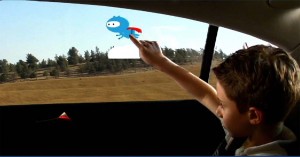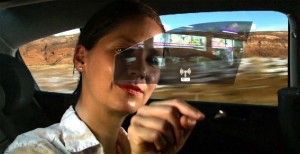Game Boys and backseat monitors are “so five years ago,” suggests Tom Seder, a manager at the General Motors R&D labs.
Working with the Future Lab, at Israel’s Bezalel Academy of Art and Design, GM researchers are exploring ways to turn a car’s rear windows into interactive devices that could permit backseat passengers – children in particular – to have a more interesting experience while traveling.
According to GM, the Windows of Opportunity, or WOO, Project was inspired by studies showing that travelers often feel disconnected from the world outside. The goal of the project isn’t to replace those Game Boys, iPads and seatback monitors as a way to play Mario Brothers, but to actually nurture curiosity about what’s beyond the passenger compartment.
“Traditionally, the use of interactive displays in cars has been limited to the driver and front passenger, but we see an opportunity to provide a technology interface designed specifically for rear seat passengers,” said Seder. “Advanced windows that are capable of responding to vehicle speed and location could augment real world views with interactive enhancements to provide entertainment and educational value.”
GM asked students at Bezalel, Israel’s oldest institute for higher education, to come up with apps that could be presented on vehicle windows. Among those they developed:
- Otto, an animated character that helps children learn about what they see along the road;
- Foofu, an app that helps encourage creativity as children draw with their fingers on steamy windows;
- Spindow, an app that would let children in one car connect with kids in other parts of the world in real time; and
- Pond, a similar app that would also connect children in different vehicles while letting them share music and messages.
“Projects like WOO are invaluable, because working with designers and scholars from outside of the automotive industry brings fresh perspective to vehicle technology development,” said Omer Tsimhoni, lab group manager for human-machine interface, GM Advanced Technical Center in Israel.
So-called “smart glass” is beginning to find a variety of applications in architecture and displays, and it was featured in the recent hit movie, Mission Impossible: Ghost Protocol. It had a much more limited use in Daimler’s Maybach line, where passengers could transition an optional roof panel from clear to translucent with the touch of a button.
For now, GM says it has no production plans for the smart glass system, but in today’s competitive automotive world, that could change rather quickly.


